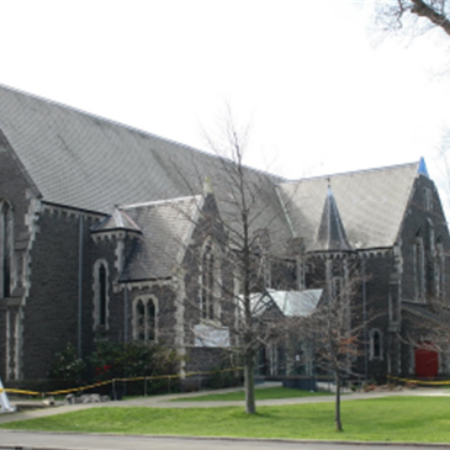This week I had a conversation with a vestry member of St Luke’s, the church that had previously stood at the intersection of Manchester and Kilmore Streets. The parish dissolved last year, but its work continues through the ministries it funds. For example, the St Luke’s Inner City Chaplain is sustained through funds of the former Parish.
Another legacy is the St Luke’s Close, a housing development adjacent to the church. Already in 1979 plans were drawn up for housing next to the church, Part of the idea was to freshen up the neighbourhood, which appeared somewhat unfriendly. Plans became more concrete when a group of parishioners and relatives of the vicar proposed plans for a development that would include eco-friendly design features. As part of the plan not only housing would be built, but also the old hall replaced by a new, friendlier facility.
The design group was drawn from the Parish and friends. It acted as the developer of the site. Unfortunately, this group did not keep the vestry and parish informed at all times, with the press sometimes knowing before the Parish what was happening. While the Church Property Trustees (CPT) had concerns about the concept and project management, they allowed the development to proceed.
Unfortunately, the first builder went into liquidation, resulting in losses and a delay of the project.
This put considerable stress on the vestry and parish. A new builder was found and the houses were finally completed. The purchasers of the houses disputed that the houses were built to the individualised specifications and withheld payment for some time. This was eventually sorted. Due to heritage requirements, the new hall and community centre could not be built.
Some parishioners later bought houses in St Luke’s Close. They were satisfied with the well-designed units, and enjoyed living there. The development made the area friendlier and brought more life to it during the week. The Parish kept some representation at St Luke’s Close to ensure interaction between the residents and the Parish and keep some influence in the neighbourhood.
Looking back, the lessons learned are that it is important to bring in outside oversight to such a project, preferably an outside developer, who carries most of the risk. Conflicts of interest need to be clearly addressed. The Parish as a whole needs to be kept informed and be able to provide some input. Good planning and preparatory work need to be done before embarking on the project. Reconciliation within a congregation may be needed at times.
We can learn from other parishes and projects. Some of the mistakes made at St Luke’s have caused CPT to be more cautious and that’s why current processes are needed. I do hope that so far we’ve been able to avoid the greatest pitfalls. It is sometimes through such boring processes that our witness to the world can be made more effective.
Blessings – Tim

